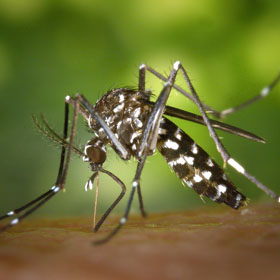What does coronavirus etc. have to do with human intervention in nature?

What do the coronavirus, plague, Ebola and many other infectious diseases have in common? In this task, the students analyse an interview with a scientist about zoonotic diseases. They find out that the coronavirus originated in animals. They develop their own ideas on how the risk of zoonotic diseases can be reduced. This lesson plan is suitable for classroom teaching and online learning at home.
Skills and learning objectives
Students will:
- Produce basic information about zoonotic diseases: what the term means and how these diseases emerge
- Sharpen their critical thinking skills by reflecting on their prior knowledge about the emergence of the coronavirus and correcting it if necessary
- Develop their argumentation skills by exploring options to reduce the risk of zoonotic diseases
- Build their methodological skills by conducting a question-led evaluation of texts on this topic, including an interview
- Improve their communication and presentation skills by talking about their findings and taking part in discussions
Procedure
Main questions for this lesson:
- What are the ways in which pathogens can be transmitted from animals to humans?
- How is human interaction with nature linked to the emergence of zoonotic diseases?
Warm-up
To start, the teacher introduces the main questions for the lesson. The students then hold a full-group discussion on the following questions (in class or by video conference):
- Where does the coronavirus come from?
- What does the coronavirus have to do with nature and/or animals?
In this way, the students collate and reflect on their existing knowledge and their assumptions about the topic. The findings are noted on the blackboard/smartboard/in workbooks (with no comments from the teacher initially).
The teacher briefly informs the class that COVID-19 is a zoonotic disease: scientists have ascertained that the virus causing it originated in an animal.
In addition, the teacher describes other examples of zoonotic diseases, such as HIV, rabies, plague, Ebola and SARS. In a brief class survey, the students discuss whether they have heard of these infectious diseases. The teacher explains that experts are predicting the possible emergence of more zoonotic diseases in future. The teacher also gives an example of diseases that can be transmitted from humans to animals: flu viruses can be passed onto mountain gorillas and other great apes if infected humans get too close to these animals.
Student exercise
The students work independently on the background to the emergence of various zoonotic diseases. With the aid of information materials, they answer the main questions:
- What are the ways in which pathogens can be transmitted from animals to humans?
- How is human interaction with nature linked to the emergence of zoonotic diseases?
To answer the questions, the students analyse an interview with Professor Josef Settele, a scientist at the Helmholtz Centre for Environmental Research in Germany. If necessary, the students can listen to the interview several times.
Based on the content of the interview, the students produce a definition of the term "zoonotic diseases".
This definition should include answers to the following questions:
- What does the term "zoonotic disease" generally describe? (An infectious disease that can be transmitted from animals to humans and vice versa)
- What are some examples of zoonotic diseases? (Plague, SARS, MERS, Ebola, etc.)
- When is the risk of viral transmission from animals to humans particularly high? (When there is very close contact between humans and animals or when animal population density is high)
- Which factors encourage the spread of zoonotic diseases? (Human encroachment on natural habitats, destruction of ecosystems, loss of species diversity, intensive livestock farming – and to a much lesser extent, consumption of wild meat; for further information, see the background text)
- What can be done to prevent further epidemics as far as possible? (Preserve natural habitats, avoid excessively high animal population densities, maintain biodiversity, reduce livestock density)
Wrap-up
The students present their findings to the group (in class or by video conference). The questions posed at the start are then revisited and answered together:
- Where does the coronavirus come from?
- What does the coronavirus have to do with nature and/or animals?
If necessary, cross out any incorrect assumptions in the student contributions collected at the start of the lesson and noted on the blackboard/smartboard/in workbooks. This is also a good opportunity to talk about and correct other common misconceptions or prejudices (e.g. about the consumption of meat from wild animals in China, which only plays a minor role in this context since it takes place on a relatively limited scale).
At the end of the lesson, the teacher asks the students to discuss what possibilities there are to prevent the spread of a (hypothetical) novel zoonotic disease or reduce the risk of emergence. (Reduce risk of emergence: e.g. no wildlife trade; no rainforest clearance; buy locally sourced organic produce; prevent spread by washing hands etc.).
Next step
- Students design campaign materials in a format of their choice, e.g. posters, drawings, collages, flyers, on the topic "promoting biological diversity".

